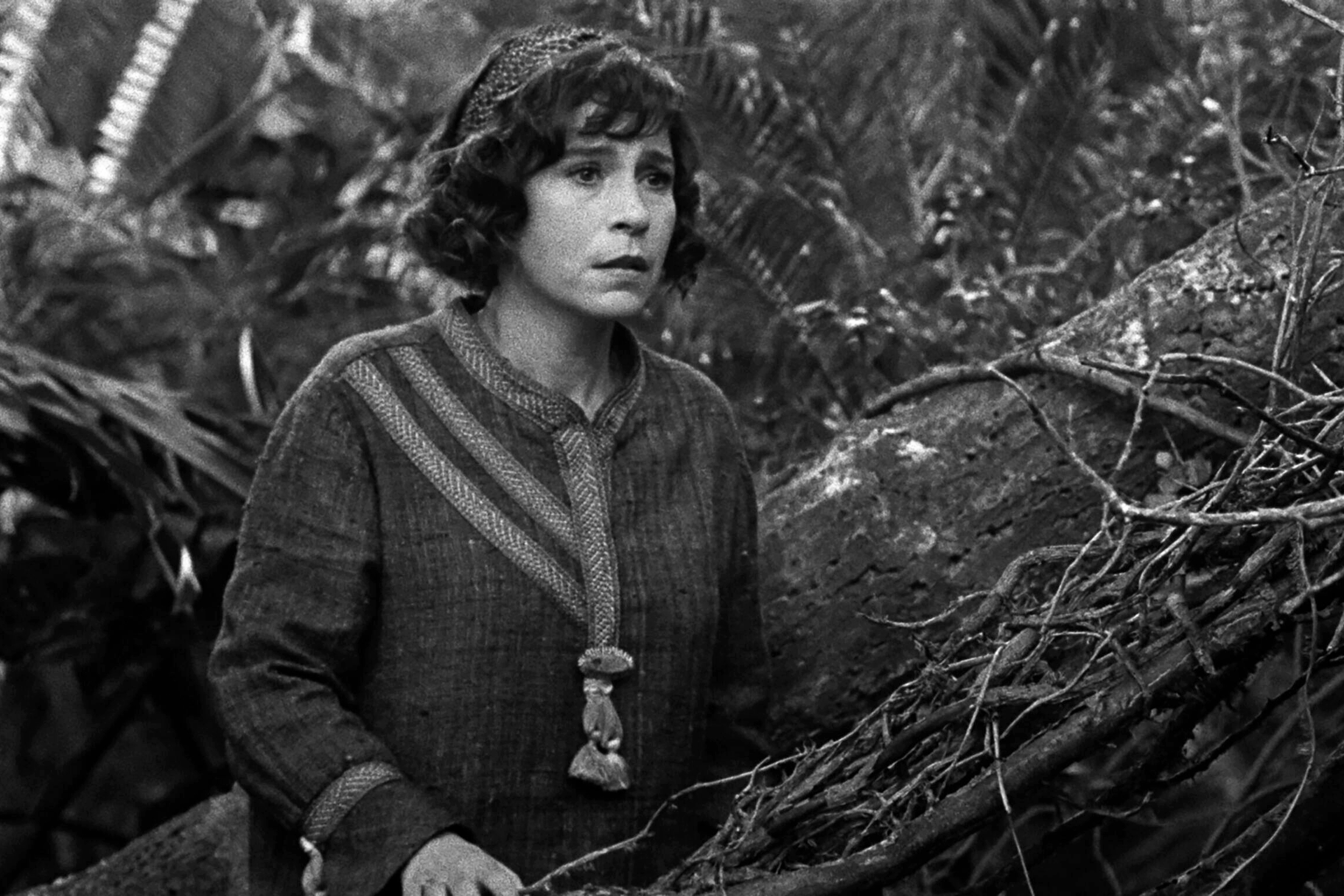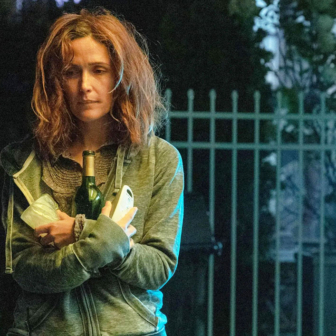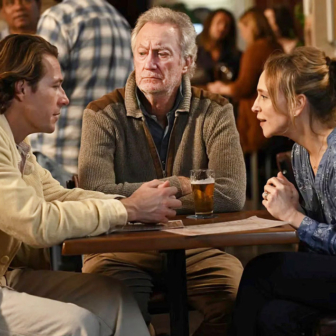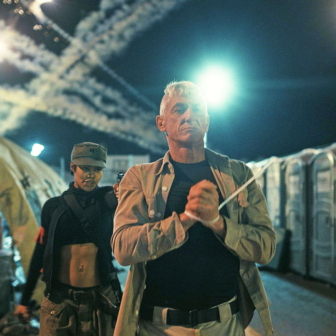In his enveloping, tactile Grand Tour (currently in cinemas), Portuguese director Miguel Gomes takes us on a hectic yet leisurely adventure in storytelling that blurs boundaries between past and present, fiction and documentary, black-and-white and colour, absurdity and melancholy, and mixes languages and cinematic conventions.
The film begins as a story of colonial anxiety borrowed from a travel piece by Somerset Maugham. It is 1918, and an English government official, Edward (Gonçalo Waddington), has gone to Rangoon to meet his fiancée Molly (Crista Alfaiate), whom he has not seen for seven years. Overwhelmed by a sudden wave of panic, he flees, boarding a ship to Singapore and leaving a message telling her to return home. But the resourceful Molly tracks him as he dodges from country to country, sending him a telegram each time to announce her impending arrival.
The first half of the film traces Edward’s journey; we then follow Molly’s very different trajectory as she makes her way across the same terrain. All of this happens within a formal yet fluid structure that feels ready to shift at a moment’s notice, the past and the present feeding into each other.
Grand Tour’s scenes involving the fictional characters of 1918 were shot on a soundstage and often look like the lush Hollywood movies of the 1930s; they’re interwoven with contemporary everyday quasi-documentary footage filmed on location in the countries the pair visit. Voiceover narrators speak in the language of each country and traditional puppet performances from each region are a recurring motif. This might sound like the most chaotic combination, but before long the mixture of disruption and continuity starts to take on its own exhilarating coherence.
In the midst of it all, the central characters wrestle in various ways with their fates and delusions. Edward remains pretty much the hapless Englishman abroad; Molly is made of sterner stuff. At first she has the insouciance of a screwball heroine, but gradually she becomes a more sombre figure. Gomes keeps the viewer rewardingly off-balance to the very end, constantly questioning, caught between the grave and the playful, unmoored from familiar notions of time and space.
Some of the shooting constraints in Grand Tour were necessitated by Covid. For Iranian director Mohammad Rasoulof, the restrictions on the making of The Seed of the Sacred Fig (opens 27 February) stemmed from the repression he has endured from Iranian authorities over many years. He has faced prison terms on several occasions, has been banned from making films and was forbidden to leave the country. This film was shot in secret and Rasoulof fled Iran before the production was completed.
The Seed of the Sacred Fig shifts tone several times, but a degree of claustrophobia is evident from the beginning. A good deal of the film takes place within the confines of one family’s Tehran apartment; only in the final quarter do its characters engineer a kind of escape that turns out to be anything but.
The patriarch of the family is Iman (Missagh Zareh), a lawyer who has just been promoted to the position of investigating judge. He is warned that this is controversial, dangerous work and that secrecy is essential. He is given a gun to protect himself and his family. Then, in his first case, he is asked to sign off immediately on a death sentence. At this point you might expect the film to revolve around the moral dilemmas of a man who has always prided himself on conscientious investigations.
But Rasoulof is more focused on the women of Iman’s family: his insistently supportive wife Najmeh (Soheila Golestani) and their lively daughters Rezvan and Sana (Mahsa Rostami and Setareh Maleki). The film is set in 2022, when the regime was brutally suppressing demonstrations by young women following the death in custody of a young woman arrested by the morality police.
On several occasions Rasoulof incorporates real footage, shot on mobile phones, of the demonstrations and the police brutality. These are images that Rezvan and Sana are able to see on social media. The sisters, who also have some contact with what’s happening on the ground, become increasingly disenchanted with their parents’ attempts to control their lives and their understanding of what is happening around them.
As they begin to rebel, Iman’s paranoia grows and his actions become more and more extreme. The family dynamics, which have changed considerably over the course of the film, become impossible to sustain. In the same way, The Seed of the Sacred Fig (nominated for an Academy Award for best international film) morphs from one kind of film to another, but it is never less than gripping.
French filmmaker Mati Diop’s poetic, riveting documentary Dahomey, which opens on 27 February, follows a journey of return with complex ramifications. Diop originally planned to make a fictional work on the subject of reparation, and something of that spirit of invention and speculation feels as if it has carried over into this version.
Early in the film, we see staff at Paris’s Musée du Quai Branly packing up treasures looted from the kingdom of
Dahomey in the 1890s by French colonisers. They are being returned to what is now the Republic of Benin. France holds 7000 of these treasures, we learn, but in this instance only twenty-six will go back.
The first words we hear don’t come from a documentary talking head, however. They are spoken by a voice that comes out of the darkness, over a black screen, narrating the experience of capture and return. It is heard more than once, and it establishes a haunting context for what is to come.
Diop has given a voice to one of the statues that is making the journey back, a representation of a royal figure. A sense of the uncanny pervades the film: Dahomey, like Diop’s 2019 debut feature, Atlantics, is a haunted narrative, but there is also a grace and openness to it, an attention to small, telling details. It’s a brief work (only sixty-eight minutes) but it feels distilled, rich, full of possibilities.
In Benin, the treasures are unpacked, documented and described before they go on display. Their arrival is a media and political event in Benin, with front-page headlines and an elaborate ceremony of welcome. Diop doesn’t dwell on this, however; she looks elsewhere for speculation about what their return might mean. Towards the end, she presents a fascinating, vigorous discussion between students from the University of Abomey-Calavi.
The debate was initiated by Diop, and she sought out a range of speakers from different disciplines with very different points of view. Their thoughtful, sharp, sometimes passionately expressed responses — delivered in French, the colonisers’ language, as several of them point out — range from joy to cynicism to sceptical political analysis to nuanced appreciation. There is no suggestion of a consensus or conclusion; rather, there’s the sense of a vital, continuing discussion about the relationship between past, present and future. •




